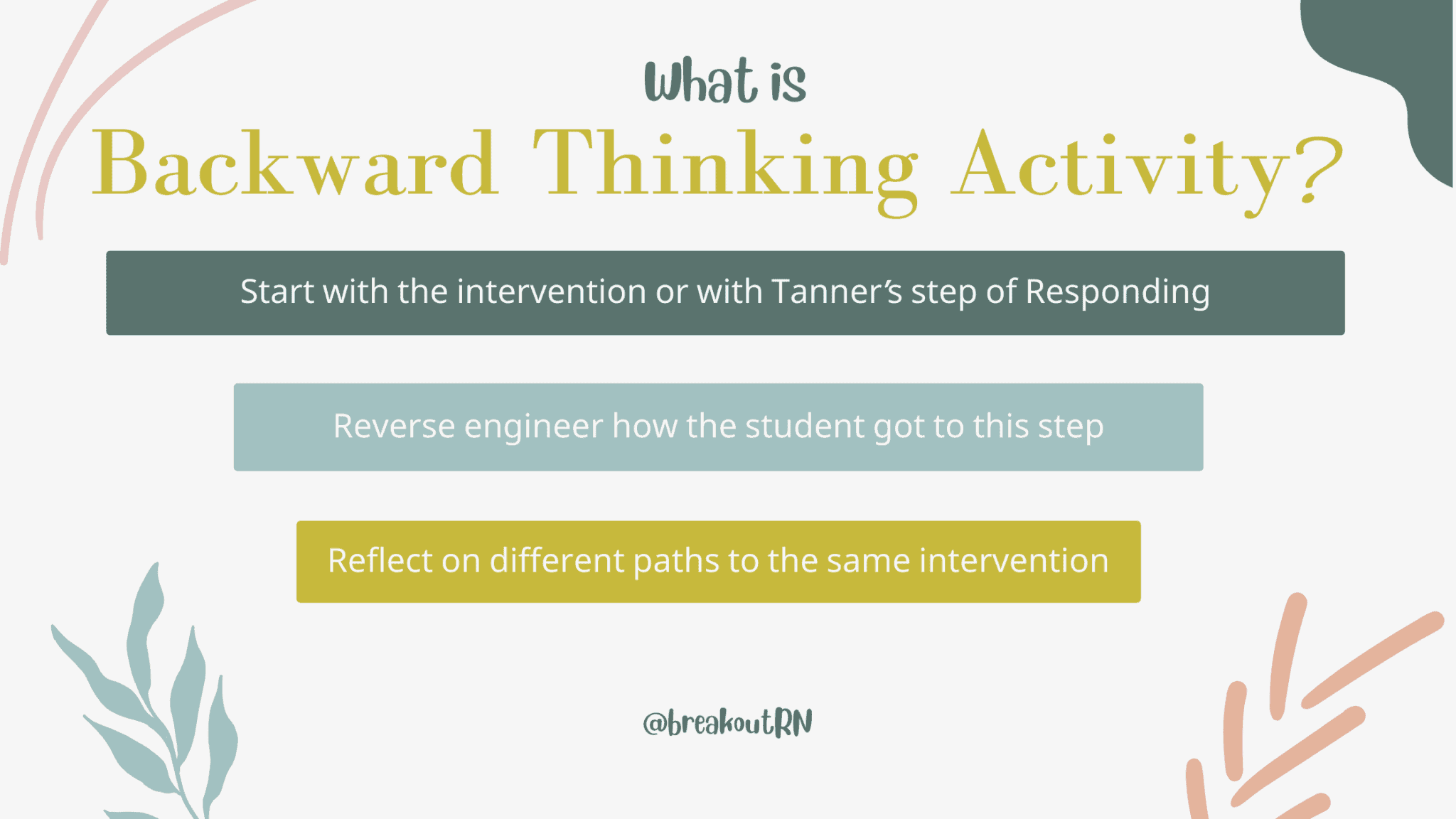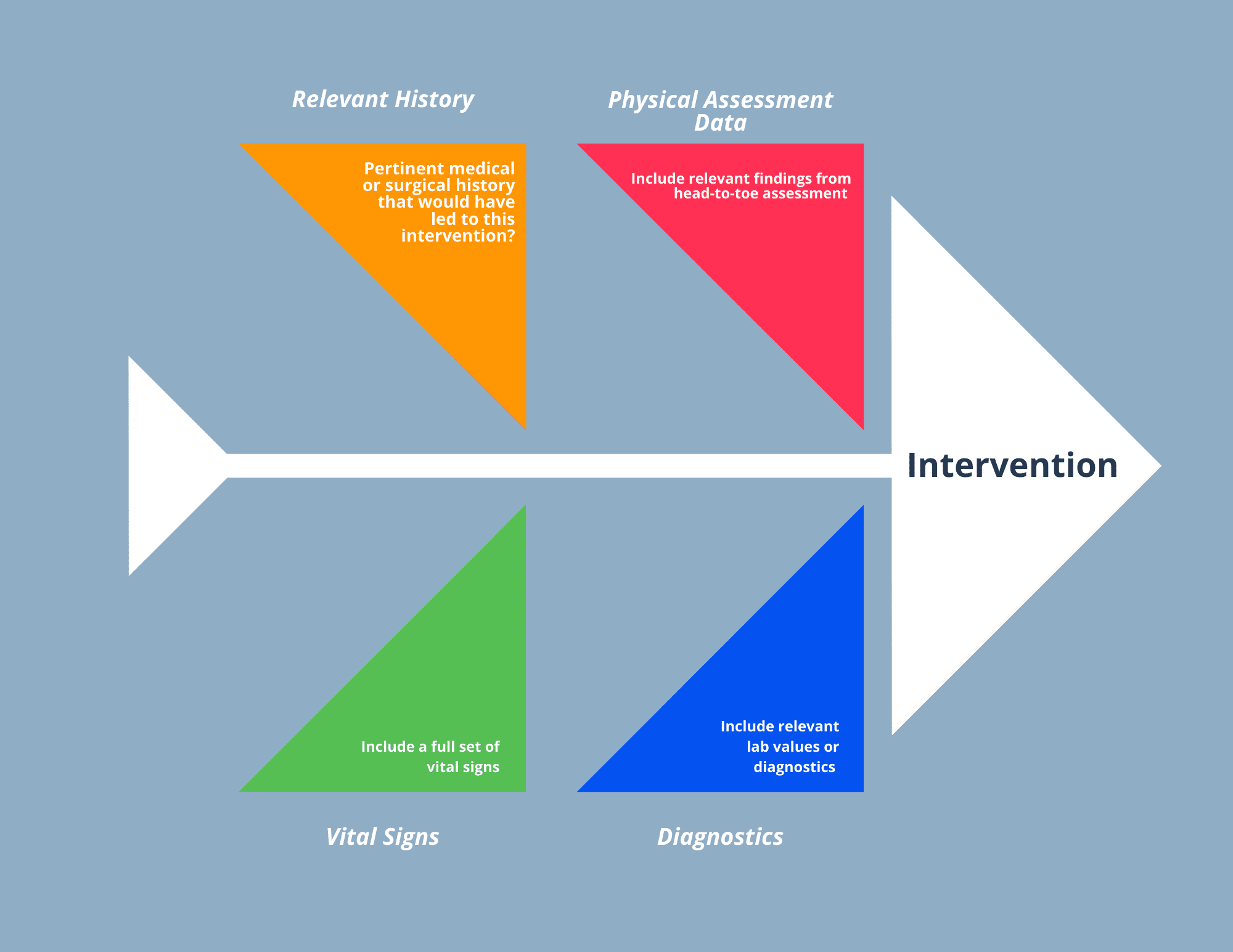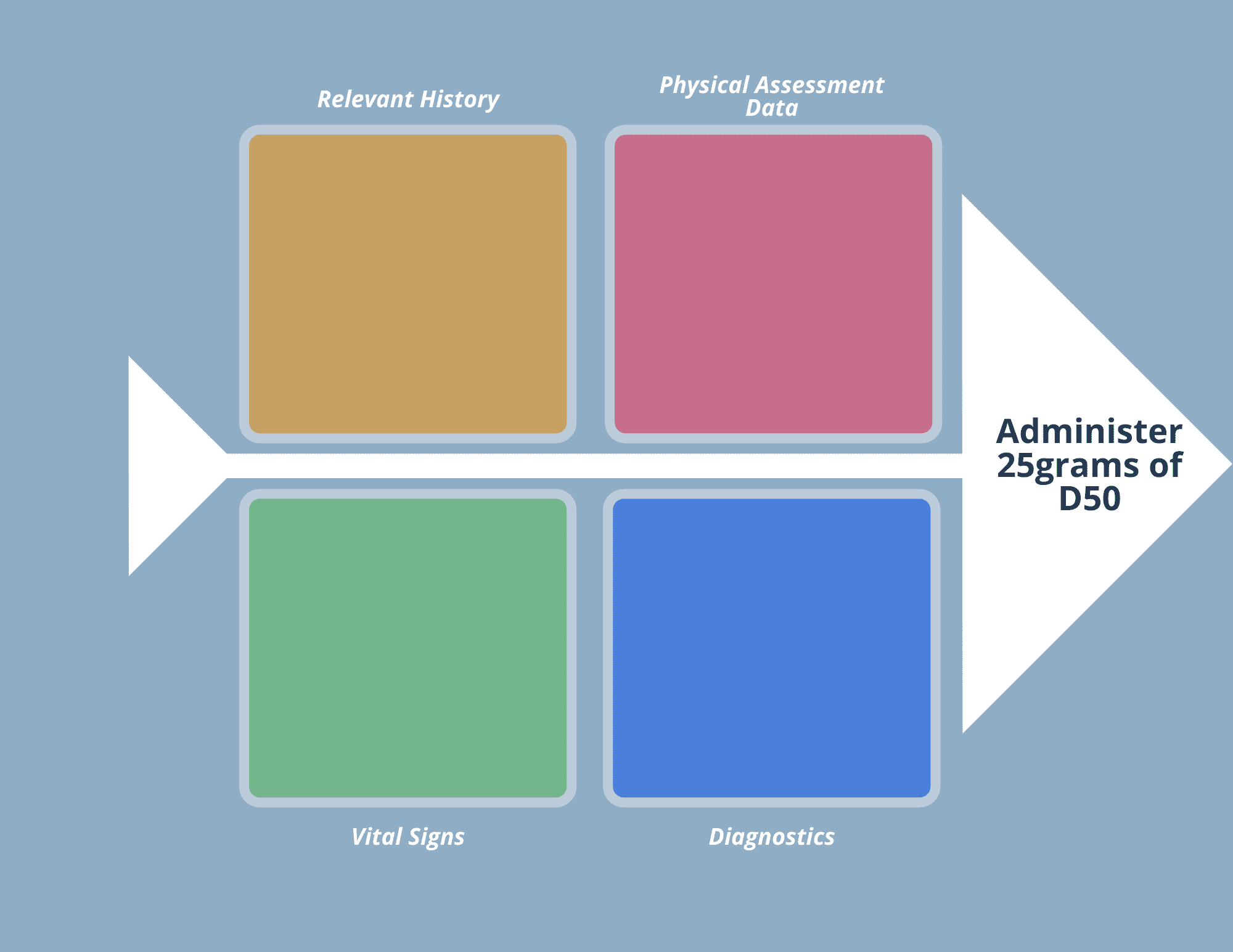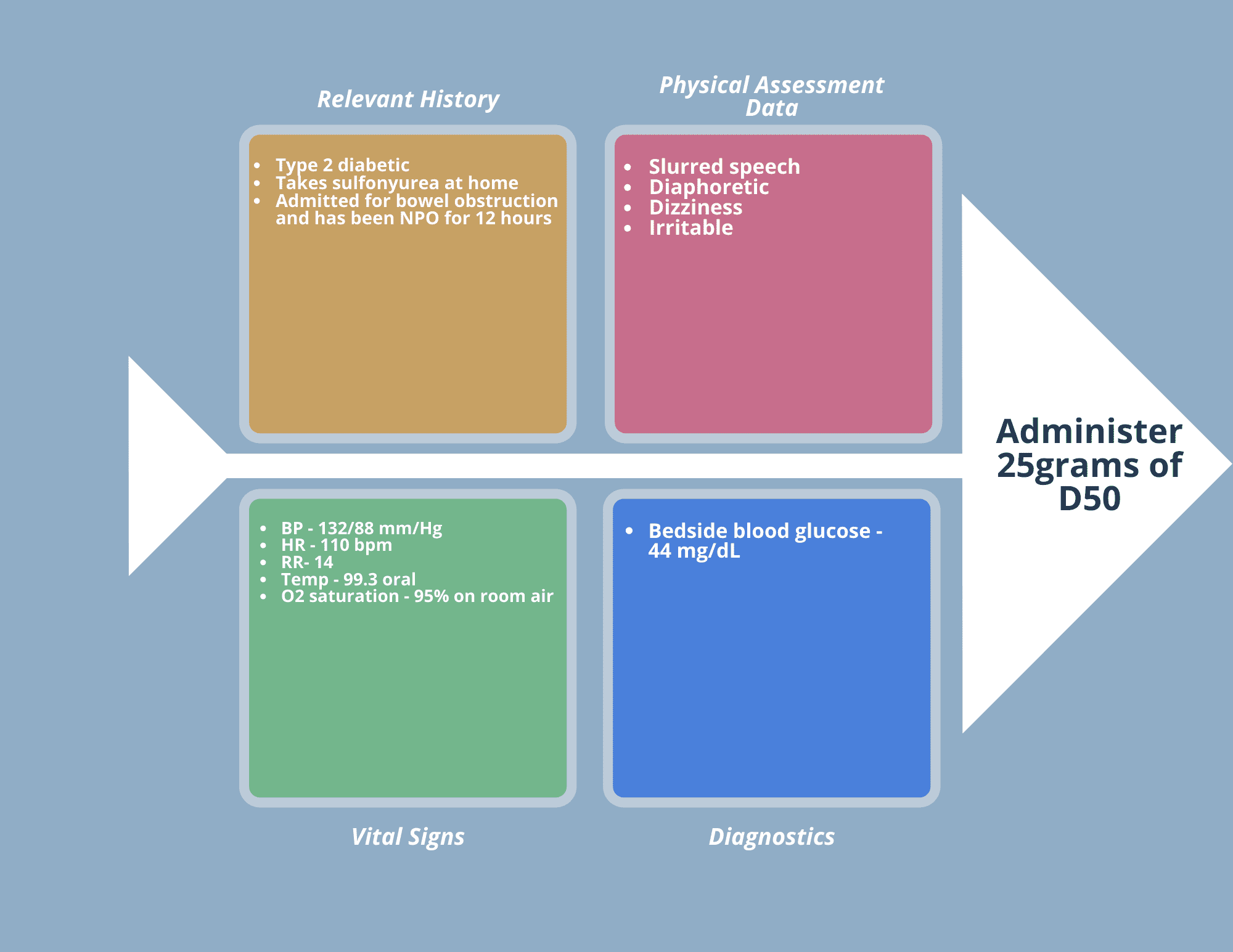
Thank you to Martha Johnson, MSN, RN, CEN for contributing this post, and making her practical and innovative strategies to teach and develop clinical judgment available on KeithRN! I support and strongly commend Martha’s strategies, tools, and her website BreakoutRN, which has many resources and additional strategies to make learning active and get student nurses thinking.
The concept of working backward is a popular and well-worn idea. For example, in Stephen Covey’s book, 7 Habits of Highly Effective People, one of the habits is “Begin with the End in Mind.” Backward course design emphasizes beginning with what the educators want students to know by the end of the lesson or semester and planning activities and assessments around this goal. While working backward typically applies to the behind-the-scenes work of the educator, we can use this concept as a clinical judgment activity.
Think of it as starting near the end. If you use the nursing process, begin the activity with the nursing intervention. If you are using Tanner’s framework, this activity begins with the responding step. Give students an intervention and ask them to reverse engineer how they got to that conclusion takes a different set of problem-solving skills and helps students to see their decisions from a different angle. I love using backward work because it requires students to have a strong understanding of the concepts rather than rote memorization.
Backward thinking example using ABG interpretation
An excellent example of a clinical judgment activity is using this working backward technique when practicing ABG analysis. First, you teach students how to interpret the pH, CO2, and bicarb. Then, you give them the lab values, and they interpret. This technique is terrific practice at the understanding level.
But we need to level this up. Doing the backward work adds challenge! Give the students a scenario with the final intervention, i.e., prepare the patient for intubation. Now students work backward – describe what the patient looks like before. Have them give values for pH, CO2, and bicarb. What are their vital signs? This technique requires a deeper understanding of acid-base balance than simply interpreting an ABG.
Fishbone Analysis as a Clinical Judgment Activity
The Fishbone Analysis gives both the educator and students structure to work backward.

How to implement
Using the Fishbone Analysis worksheet, give students a nursing intervention. In this example, the intervention is administering 25 grams of D50, shown in the fish head.

Then, have students work backward through the events leading up to the intervention, including vitals signs, medical history, assessment findings, and diagnostics.

The beauty of this activity is that while there are right and wrong responses (the patient has to be hypoglycemic), there is also grey area in regards to the patient history, current vital signs, and assessment findings. Depending on the intervention you choose, you could have 10 completely different fishbones which can lead to a great discussion. Imagine the possible scenarios that could be related to a final intervention of “turn every 2 hours” or “administer packed red blood cells.”
You can access the fishbone template here.
Using in groups
Fishbone Analysis is an excellent option for a nursing clinical judgment activity for small groups. For example, suppose you are teaching diabetic content. In that case, you could have a variety of interventions related to blood glucose irregularities, having different groups working on different fishbones with various nursing interventions. Also, you could ask groups to build on each other’s fishbones – having students complete one section, such as vital signs, before exchanging their worksheet with another group and complete a different section, such as diagnostics.
Best for?
This activity requires higher-level thinking skills, so be sure your students have the foundational knowledge first. I like this as a small group activity, but you could also use it as an individual assignment.
Variations
Online Learning
This worksheet translates nicely to the online learning environment. It could be completed as an assignment or as part of a discussion board. Rather than having students respond to two peers’ posts, they could work in groups, each completing an individual section of the fishbone analysis and reviewing together or commenting on another student’s analysis worksheet.
**If you teach online, an escape room is a wonderful way to bring the application of nursing knowledge into the world of online learning. Check out the short video tutorial I made on creating a virtual escape room using Google Forms.
Critical Scenarios
As a former ER nurse, I always imagine and plan for the worst possible scenario. The fishbone analysis can help students think through emergent situations as well. In the fish head, write an emergent situation, such as a patient fall. Have them work backward to develop the clinical data before the patient falls. Maybe they had a heart arrhythmia or low blood pressure – let the students be creative. To further work through the story development, add another fish body to the other side and have students build interventions and evaluation steps the nurse should complete after a patient falls.
The Fishbone Analysis as a Clinical Judgment Activity
Creating opportunities for students to practice clinical judgment is about creating the connection between knowledge and application. My hope is that using this worksheet will make it easy for you to implement this in your classroom.
You can get the Fishbone Analysis Template here!
Remember, it doesn’t have to be a total overhaul of all your content. Just slowly adding a few activities every semester can make a difference!
Looking for more active learning activities?
Check out BreakoutRN’s products. I currently have an escape room deck (fluid and electrolyte content), a tabletop escape classroom kit (type 2 diabetes content) and a course on creating your own escape room! And a few surprise projects are in the works!
Martha Johnson, MSN, RN, CEN, is the founder of Breakout RN, a company she created to empower nurse educators to successfully transition from lecture to active learning. She believes active learning does not have to be hard or overwhelming, just take it one activity at a time.
The Ultimate Solution to Develop Clinical Judgment Skills
KeithRN’s Think Like a Nurse Membership
Access exclusive active learning resources for faculty and students, including KeithRN Case Studies, making it your go-to resource.



